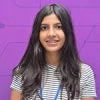
Picture this. You are a student in the year 2030. School is completely different from what your parents remember. Only attending school four days a week, most of your time is spent outdoor learning spaces. With the help of Blended E-learning, you can study on your own, focusing time on strategic topics through a plan personalized for you. Your AI learning assistant grades and offers feedback on your assignments, guiding you through difficult problems step by step, reteaching you concepts from scratch if necessary.
In geography class, you put on a virtual reality headset. Suddenly you are transported to the Andes in South America. Mesmerized by the colossal formations all around, you take notes on which materials constitute the vibrant spectrum of rock layers. History debates come alive as you and your classmates reimagine the Paris Peace Conference, sitting in the Palace of Versailles.
The possibilities are truly endless.
With the education evolving in ways that could not have been previously imagined, it is thrilling to conceptualize what innovations will come by in the future. Change is all around us. With 55 per cent of the world connected to the internet, websites like Khan Academy and Coursera are bringing incredible learning material to students even in the most rural parts of the world, free of cost.
Mastery and project-based learning will form the cornerstones of a futuristic education system. Mastery learning is an educational philosophy that requires students to achieve a level of mastery in prerequisite knowledge before moving forward. It ensures thorough learning free of conceptual gaps.
Master learning vs traditional education |
TRADITIONAL |
| * Subject material to be completed in predefined time, followed by a test * Fixed syllabus determines the content students learn through the year * Teachers teach groups of children together and are the primary means of learning the syllabus Test scores are calculated and transcribed, after which the next topic is taught regardless of scores |
MASTERY |
| * Students learn at their own pace until mastery is achieved * There is no minimum or maximum limit to what students learn, and they are free to study topics in as much detail as they like * Students learn on their own through personalised programmes while teachers identify gaps in understanding and answer questions * Students must get at least 90% of all questions right before moving on to the next topic |
Classroom design would also be largely redefined. Interlaced with technology, with moving walls, flexible seating, standing desks, OLED surfaces all over and augmented reality, classrooms will become interactive learning hubs, ensuring each and every student is actively engaged with the learning material.
Ishita Gupta is a high school student at the Inventure Academy, Bangalore, India. She is one of two winners in the World Bank Group and the Financial Times blog writing competition on reimagining education for the coming century.


Join the Conversation